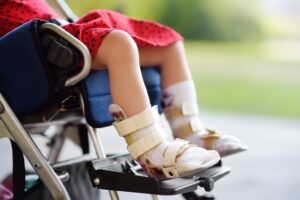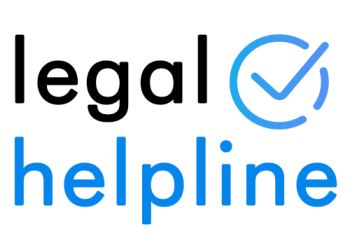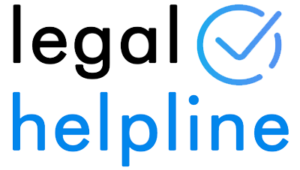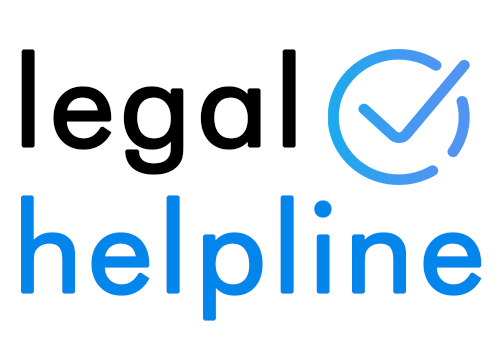This guide shares useful information on child personal injury claims. You may be the parent or guardian of a child who has been injured in an accident and are wondering whether you could make a personal injury claim on their behalf. Within this guide, we will discuss the eligibility criteria that all child injury compensation claims must meet in order for them to be valid. We will also explain who could make a claim on a child’s behalf for their injuries.
Additionally, we will explain the personal injury claims time limit and the exceptions that apply to this limitation period for those under the age of 18. We will also share examples of the various types of evidence that could be used to help support child injury claims.
Furthermore, we will explain how compensation is calculated and the different heads of claim that could be awarded for a successful claim. We will end this guide by looking at how one of the No Win No Fee solicitors experienced in child injury claims could help you with yours.
If you have any questions, you can contact a member of our friendly advisory team. They are available 24 hours a day, 7 days a week, and can be reached by:
- Calling 0333 000 0729
- Completing our online form to contact us.
- Sending a message via a live chat.

Select A Section
- When Can Child Personal Injury Claims Be Made?
- Who Could Claim On A Child’s Behalf?
- Proving Child Personal Injury Claims
- Calculating Personal Injury Compensation
- Make A Child Injury Claim On A No Win No Fee Basis
- Discover More Related To Personal Injury Claims
When Can Child Personal Injury Claims Be Made?
Children can suffer various types of injuries in their day-to-day lives, whether at home, at school or out and about. They may be nobody’s fault. However, child personal injury claims could arise if a child suffered an injury due to someone breaching the duty of care they owed them.
Below, we have provided some examples of situations where your child is owed a duty of care and when a child injury claim may arise.
Accidents On The Road
Road users owe each other a duty of care to navigate the roads in a way that keeps themselves and others safe. Additionally, they must follow the rules and regulations set out by the Road Traffic Act 1988 and the Highway Code as part of this. If another road user were to breach this duty, this could cause your child to become injured in a road traffic accident.
Some examples of how a child injury claim may arise from a road traffic accident include:
- A driver does not check for cars on the roundabout and enters at speed, then collides with a passing vehicle. The child in the back seat of the struck car suffers head and neck injuries.
- A teenage cyclist is hit by a car when they are legally travelling on a crossing, and the speeding driver does not slow down in time. The child suffers a broken collarbone along with an injured knee.
Public Place Accidents
Members of the public are owed a duty of care under The Occupiers’ Liability Act 1957. It states that those in control of public spaces must take all possible precautions to keep visitors reasonably safe on the premises while it is being used for its intended purposes. If this duty of care were to be breached, this could cause your child to suffer an injury.
Some examples of public place accidents that could lead to a child personal injury compensation claim include:
- A child playing in a public park is thrown from a faulty swing that was not maintained properly and broke mid-use. Hitting the ground inflicts an elbow injury.
- A supermarket fails to clear up or signpost a spillage on the floor. This causes your child to suffer a slip and fall that causes back and wrist injuries.
If your child has been injured and you are unsure whether you could file a child accident claim on their behalf, you can contact a member of our advisory team.
Who Could Claim On A Child’s Behalf?
A person under 18 cannot start their own personal injury claim. Child personal injury claims can instead be raised on behalf of a child by a litigation friend. A litigation friend needs to be a responsible adult who will act in the child’s best interest. This could be a solicitor or a parent or guardian of a child.
There are two ways to become a litigation friend for a child:
- Apply to be a litigation friend.
- Be appointed by the court if someone involved in the case, such as a solicitor, requests that a litigation friend is assigned.
If there is no one willing, suitable or able to be a litigation friend, the court may ask the official solicitor to step in.
Injury Claim Time Limits
The Limitation Act 1980 sets the time limit for starting personal injury claims. Generally, this is three years from the date of the accident.
However, for child personal injury claims, this time limit is paused until the child’s 18th birthday. From this date, they will then have until their 21st birthday to begin their own legal proceedings. Alternatively, a litigation friend could make a child injury claim on their behalf prior to their 18th birthday.
Other exceptions apply to those who lack the mental capacity to make their own claim. To learn more about these exceptions, you can contact a member of our advisory team. They could also help answer any questions regarding how to claim compensation on behalf of a child as a litigation friend.

Proving Child Personal Injury Claims
If you can pursue a claim for a child’s injury on their behalf, you will need evidence to support the case. This will need to demonstrate the types of injuries the child suffered, the type of accident they were involved in, and who was liable.
Some examples of evidence that could be used to support child accident claims include:
- Video footage – This could include CCTV or footage from a personal device like a dashcam.
- Photographs – This could be of the accident scene, plus any visible injuries.
- Medical evidence – For example, the child’s medical records stating any injuries they have been diagnosed with and the treatment they received for them.
- Witness contact information – Anyone who witnessed the child’s accident may be able to provide a statement about the events at a later date.
Solicitors from our panel can aid child personal injury claims by helping collect evidence. To see if you could be eligible to work with one of them if you are making a claim on behalf of your injured child, you can contact our advisors.
Calculating Personal Injury Compensation
Compensation settlements for successful child personal injury claims could result in general and special damages.
The pain and suffering your child’s injuries have caused them to experience would be compensated under general damages. This could cover both a physical and a psychological injury. Various factors will impact the amount that could be awarded under general damages, such as:
- The initial severity of the injury your child suffered.
- What medical treatment the injury required.
- How long the recovery period for the injury is.
Those responsible for valuing this head of child injury claims may refer to the Judicial College Guidelines (JCG) for help, alongside any medical evidence provided. This is because compensation guidelines are listed within this document for different injuries at varying severity levels. Within our table below, we have listed some of these guidelines.
Compensation Table
Please note that the top entry of this table has not been taken from the JCG. As all claims are different, the table is only provided for guidance.
Injury Level Compensation Guideline Description
Multiple Severe Injuries And Additional Special Damages Very Severe Up to £1,000,000+ A compensation settlement that accounts for numerous significant injuries and financial losses like a loss of work earnings and prescription fees.
Head Very Severe £344,150 to £493,000 Severe cognitive and physical disabilities require nursing on a full time basis.
Neck Severe (i) In the region of £181,020 Incomplete paraplegia, spastic quadriparesis or little to no neck movement, resulting from injury.
Back Severe (ii) £90,510 to £107,910 Features of injuries in this bracket include nerve root damage and associated loss of sensation, reduced bladder and bowel function, impaired mobility and scarring.
Ankle Very Severe £61,090 to £85,070 Limited and unusual examples of ankle injuries land in this bracket, such as a transmalleolar fracture.
Arm Injuries Resulting in Permanent and Substantial Disablement £47,810 to £73,050 Permanent residual disability, brought about by serious fractures to one or both forearms.
Knee Severe (iii) £31,960 to £53,030 Ongoing symptoms such as pain, instability or discomfort may be present.
Wrist Injury Resulting in Significant Permanent Disability £29,900 to £47,870 Useful movement still remains to an extent.
Elbow Less Severe Injuries £19,100 to £39,070 There is no significant disability or need for surgery, but function is impaired.
Shoulder Serious £15,580 to £23,430 Cases include shoulder dislocation coupled with lower brachial plexus damage, causing shoulder and neck pain.
Special Damages For Child Injury Claims
Special damages may be awarded to compensate for the monetary losses you have experienced due to your child’s injuries. Some examples could include:
- A loss of earnings – if you have needed to take time off of work to care for your child and their injuries.
- Medical expenses – for example, if you have had to pay for any prescriptions for your child.
- Travel costs – this could include taxi and train fares to medical appointments for your child.
- Care costs – if you had to pay someone to care for your child and their injuries.
In order to claim compensation for these financial losses, evidence will need to be provided. This could include bank statements, receipts and invoices.
For more information on how compensation is calculated in child personal injury claims, or to receive a free valuation of how much compensation could potentially be awarded for your child’s injury, you can contact our advisors.
Make A Child Injury Claim On A No Win No Fee Basis
If you are eligible to make a child injury claim on your child’s behalf, you may want to instruct some legal representation. After contacting one of our advisors, they may connect you with one of the No Win No Fee personal injury solicitors on our panel.
They could help you with various aspects of the claims process, such as collecting evidence and negotiating a fair settlement for your child’s injuries.
Additionally, by offering to represent the child accident claim under a Conditional Fee Agreement, this means that there will be no service fees to pay upfront. Furthermore, the solicitor won’t require any payment for their work while the claim is ongoing or if it ends unsuccessfully.
However, they will take a success fee if the claim is successful. This is taken directly from the compensation awarded as a small and legally limited percentage.

Contact Us
To learn more about the child personal injury claims process, you can contact a member of our advisory team. They could answer any questions that you may have. Additionally, they could connect you with one of the personal injury solicitors on our panel who could help you claim compensation on your child’s behalf.
To connect with them today, you can:
- Call 0333 000 0729.
- Contact us online,
- Use our live chat.
Discover More Related To Personal Injury Claims
Here are some further guides:
- An answer to the question: “How could a child brain injury lawyer help me with a claim?”.
- A focus on pedestrian car accident claims, such as when a child is hurt when crossing the road.
- A guide to claiming for orthopaedic injury, such as back or neck damage.
Some useful resources can be found below:
- Health and Safety Executive (HSE) – Sensible health and safety management in schools.
- NHS – First aid guidance.
- Royal Society for the Prevention of Accidents (RoSPA) – Our vision and mission.
Thank you for reading our guide about the process of child personal injury claims. If you have any questions, please contact our advisors.





